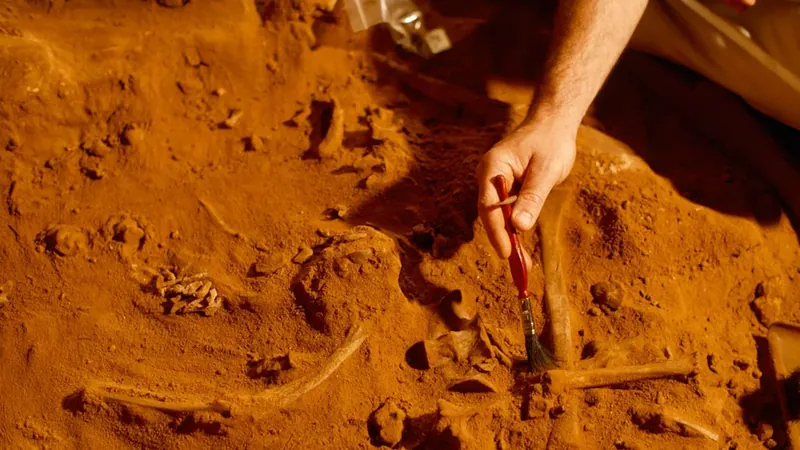
A 520-Million-Year-Old Marvel: Fossil Reveals Intact Brain and Guts
2025-08-31
Author: Ken Lee
A Stunning Discovery from the Depths of Time
In a groundbreaking find, scientists have unearthed an astonishing fossilized larva, remarkably preserved with its brain and guts intact. This 520-million-year-old specimen offers an extraordinary glimpse into the early evolution of arthropods, a group that includes insects, crabs, and lobsters.
Unlocking the Secrets of Evolution
Unlike typical fossils that often consist of stone-like bones, this ancient larva reveals soft tissues that are rarely preserved. Thanks to exceptional fossilization conditions, researchers discovered intricate details such as a brain, digestive glands, and even a primitive circulatory system.
3D Imaging: A Scientific Breakthrough
Using advanced 3D imaging techniques like synchrotron X-ray tomography, scientists were able to examine the complex structures within this larva. The findings challenge previous assumptions about the evolutionary simplicity of early arthropods, showcasing their remarkable complexity during the Cambrian Explosion.
Connecting Past and Present
Among the preserved features is the protocerebrum, a part of the brain that has evolved significantly, enabling arthropods to adapt to diverse environments—ranging from the ocean depths to the icy landscapes of Antarctica.
A Dream Come True for Researchers
Lead researcher Martin Smith expressed his amazement: "I always dreamt of discovering an arthropod larva, considering how essential developmental data is for understanding evolution. Finding such a well-preserved specimen was beyond my wildest expectations. Seeing those intricate structures truly took my breath away—how did they survive half a billion years?"
A Glimpse into Our Distant Past
Lucky researchers celebrate their extraordinary find, reminding us of the incredible history our planet holds—one that continues to unfold in the most unexpected ways.






 Brasil (PT)
Brasil (PT)
 Canada (EN)
Canada (EN)
 Chile (ES)
Chile (ES)
 Česko (CS)
Česko (CS)
 대한민국 (KO)
대한민국 (KO)
 España (ES)
España (ES)
 France (FR)
France (FR)
 Hong Kong (EN)
Hong Kong (EN)
 Italia (IT)
Italia (IT)
 日本 (JA)
日本 (JA)
 Magyarország (HU)
Magyarország (HU)
 Norge (NO)
Norge (NO)
 Polska (PL)
Polska (PL)
 Schweiz (DE)
Schweiz (DE)
 Singapore (EN)
Singapore (EN)
 Sverige (SV)
Sverige (SV)
 Suomi (FI)
Suomi (FI)
 Türkiye (TR)
Türkiye (TR)
 الإمارات العربية المتحدة (AR)
الإمارات العربية المتحدة (AR)